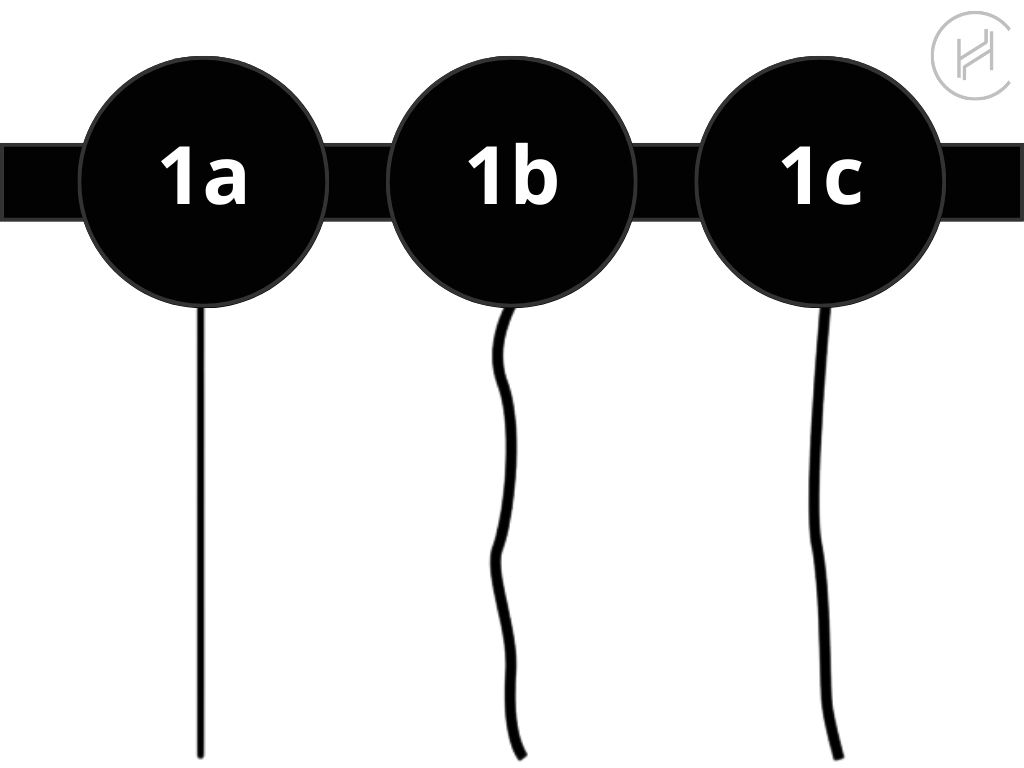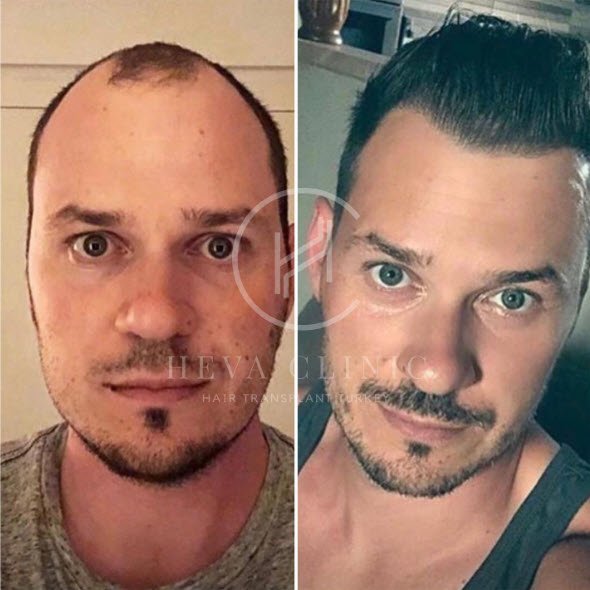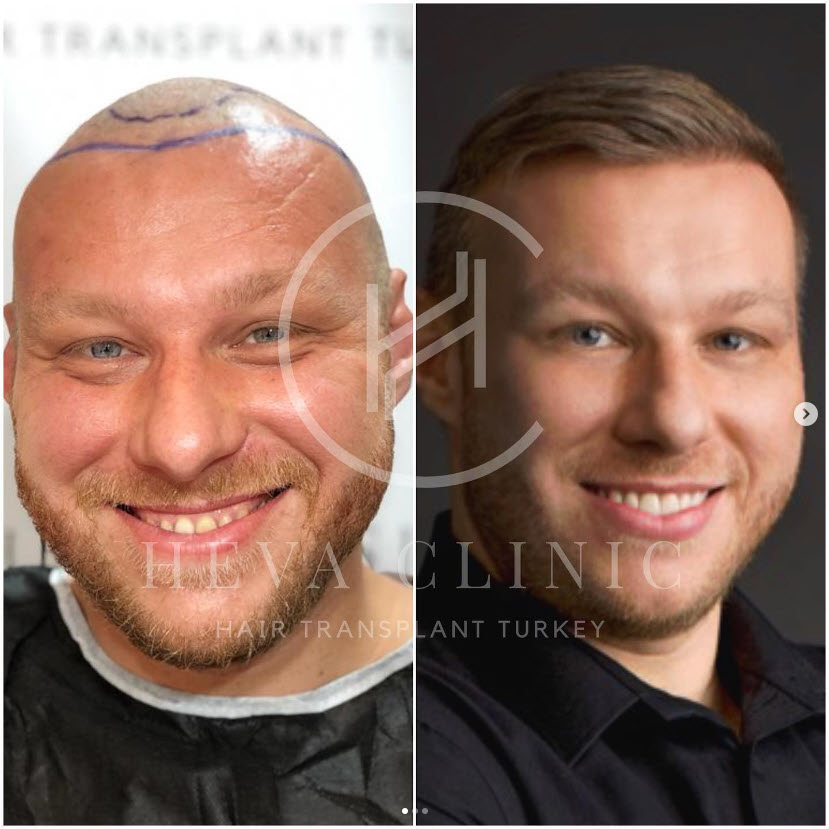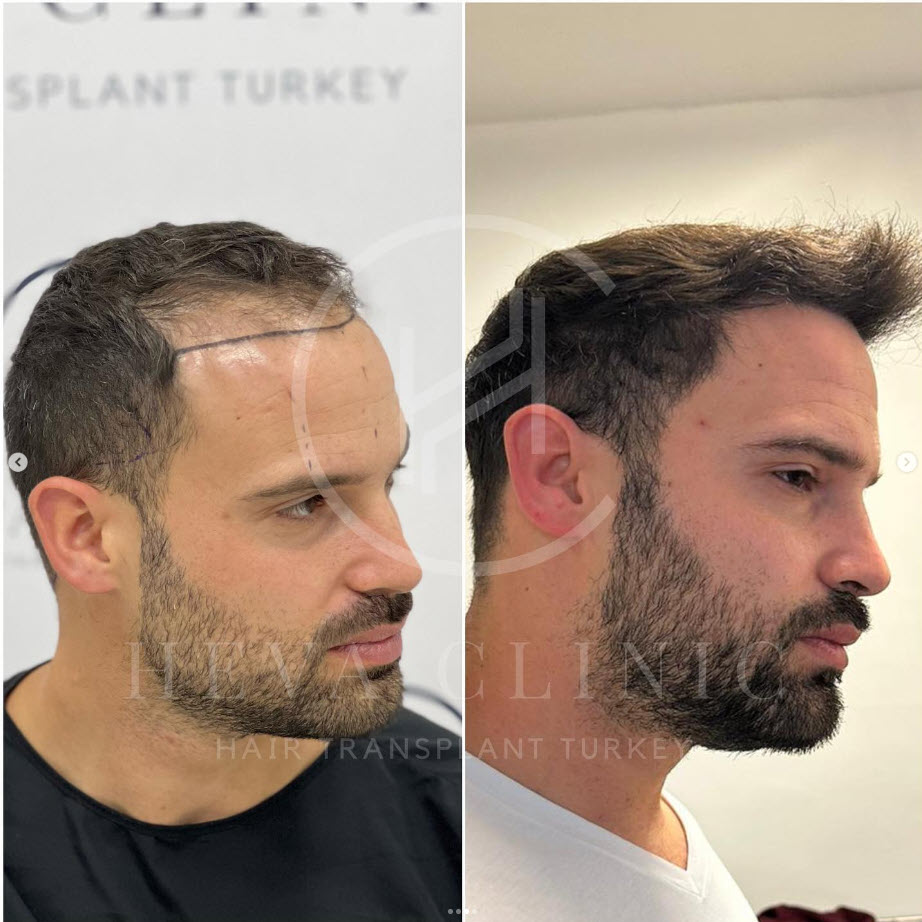Type 1 hair, also known as straight hair, is an elegant and versatile hair type. Individuals with type 1 hair may wonder if adding some curl or wave to their straight strands is possible.

This article will delve into everything you need to know about type 1 hair, including its unique texture, care needs, and the potential to add some curl or wave to the locks. We’ll also explore the subtypes of type 1 hair, from the finest and most delicate 1a hair to the thickest and coarsest 1c hair, and offer tips for keeping your locks healthy and shiny.
What is Type 1 Hair?
Type 1 hair, also known as straight hair, is a hair type that lacks any curl or wave pattern. Generally, this hair type appears sleek and shiny and is manageable with proper care and styling techniques.

Type 1 hair can be further classified into three sub-types: 1a, 1b, and 1c, each with unique features.
Types of Type 1 Hair

1A Hair Type
1a hair type is the finest and straightest subtype of Type 1 hair. This hair type is generally gleaming and tends to be very smooth to the touch. However, it can also be quite delicate and prone to breakage due to its thinness. It is also the most challenging type to create volume or style due to its lack of texture.

1a hair tends to be naturally silky, and it has the least amount of body among all hair types. Its natural flow is straight, and it doesn’t have any curls or waves. Also, 1a hair type does not experience any shrinkage when wet since it has no curl pattern.
1a hair type also tends to have low density, meaning there are fewer hair strands per square inch than other hair types.

1B Hair Type
1b hair type is a slightly thicker subtype of Type 1 hair. This hair type is straight but can have a slight wave or bend, appearing less flat than 1a hair.
1b hair has a bit more texture and body than 1a hair but is still relatively straight. It can appear fuller and denser than 1a hair but may also be prone to tangling and breakage if not cared for properly.

1b hair type may experience minimal shrinkage when wet since it has a slight wave or bend, but it will retain most of its length when dry.

1C Hair Type
Type 1c hair is unique, with slight bends and arcs from the root that curve inward toward the chin, giving it a soft tousled shape with a subtle body.
This hair has a more relaxed wave pattern than type 1A and 1B hair types. The hair strands are typically coarse to medium coarse and are known for flyaways, frizz, and oiliness right after washing.

The shine of type 1c is less lustrous than the 1a and 1b hair types. Even though 1c hair type is prone to oiliness, it appears incredibly full, thick, and voluminous. The coarser strands of this type make it easier to curl than the other types of type 1 hair.
Can type 1 hair get curly?
Type 1 hair is generally straight with no visible curl pattern. However, some individuals with type 1 hair can experience a slight wave or bend to their hair, especially if it is longer. This can give the appearance of a very subtle, loose wave or curl.
However, type 1 hair can hold curls or waves for extended periods only by using styling tools or products. So while type 1 hair can have a slight wave or bend, it is not considered to be a naturally curly hair type.
How to take care of type 1 hair?
Type 1 hair is generally low maintenance but still requires proper care to keep it healthy and to look its best. Here are a few helpful tips on how to take care of type 1 hair:
1- Shampoo regularly to remove excess oil and prevent limpness
2- Use a brush with rounded, plastic prongs to avoid damaging the cuticle
3- Choose volumizing shampoos and conditioners to avoid weighing down hair
4- Wash gently and focus on the scalp, not the length of the hair
5- Detangle starting from the ends to avoid breakage
6- Handle hair with care during styling, coloring, and cutting
7- Avoid tight hairstyles that can cause breakage and damage
What are the main differences between type 1 and type 2 hair?

The major differences between type 1 and type 2 hair are their texture and curl pattern. Type 1 hair is straight, while type 2 hair has some degree of the wave, from loose to more defined S-shaped curls.
Type 1 hair is generally thinner and finer than type 2 hair, which can be thicker and coarser. Type 2 hair is also more prone to frizz and can require more moisture to maintain its shape.
When it comes to styling, type 1 hair can be easier to manage and style with heat tools, while type 2 hair often requires products and techniques specific to its curl pattern to enhance and define the waves or curls.
What is the rarest hair type?
Hair type 1A is the rarest of all hair types. Due to its smooth texture, hair type 1A tends to lie flat against the scalp, which can sometimes make it difficult to style. However, when properly cared for and styled, hair type 1A can be incredibly sleek and shiny, with a beautiful, natural luster.
Can you change your hair type from type 1 to 2?
Your genetics determines your hair texture; therefore, it’s impossible to change your hair type completely. Fortunately, there are ways to enhance and improve the texture of your hair to make it as healthy as possible. So, by focusing on hair care techniques and using nourishing products, you can achieve optimal hair health regardless of your natural texture.
4 reasons why should you know your hair type?
Knowing your hair type can be beneficial for several reasons, including:

1- Proper hair care
Understanding your hair type can help you identify the most suitable products and styling techniques. For instance, someone with oily, straight hair may benefit from lightweight products that don’t weigh the hair down, whereas if you have dry, curly hair, you may need to use products that provide moisture and define curls.

2- Damage prevention
Different hair types are susceptible to various forms of damage, such as breakage, split ends, and frizz. By knowing your hair type, you can take preventive measures to protect your hair from damage. For example, if you carry fine hair, you may need to be more cautious when using heat-styling tools, as they can cause breakage.

3- Styling options
Knowing your hair type can also help you explore the most suitable styling options for your hair. For instance, if you have thick, wavy hair, you may be able to experiment with voluminous hairstyles that require a lot of texture, whereas someone with fine, straight hair may prefer sleeker, more polished hairstyles.

4- Healthy hair growth
Finally, understanding your hair type can help you adopt healthy hair care practices that promote hair growth and avert hair loss. For example, if you have got tightly coiled hair, you may need to be more mindful of your detangling routine to avoid damaging the hair follicles, leading lead to hair loss.
Is type 1 hair suitable for hair transplant?
Taking hair grafts from patients with straight hair is a comparatively simpler process than those with curly hair. Straight hair type has thinner and straighter follicles, which can be easily extracted. On the other hand, curly/afro-textured hair transplant has tougher follicles that make extraction more challenging.
Various hair transplant techniques are used to overcome these challenges depending on the hair type. Ice FUE (Follicular Unit Extraction) and DHI (Direct Hair Implantation) are the most popular techniques since the late 2010s. Hair transplant before & after photos show that both techniques can be used for type 1 hair, providing minimal pain, no scars and effective hair restoration results.

Takeaway
Type 1 hair texture is typically straight and lacks volume, but it can still benefit from proper care and styling techniques to enhance its natural beauty. To unlock its curly hair potential, it’s essential to use moisturizing products, avoid heat damage, and incorporate techniques like diffusing and scrunching. With the right approach, even straight hair can have some natural texture and movement.





